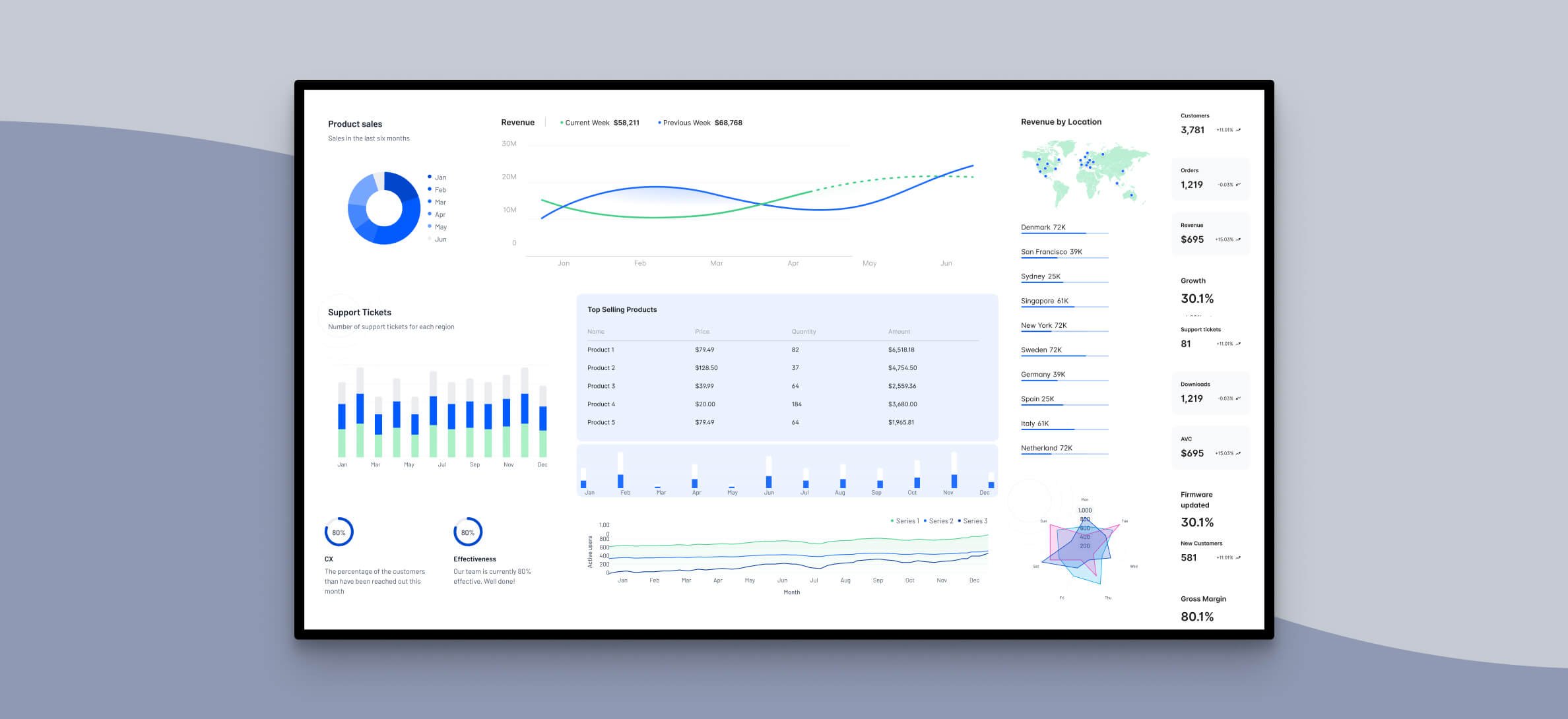5 Business Intelligence Aspects You Should Explore

In the world of IT, a new common abbreviation has exploded in popularity recently. BI, short for business intelligence, focuses on using data from your business to show a more analytical view of your company’s performance, allowing for more data-based decision-making and strategies.
Even if you don’t think about BI today, your company is probably using it without thinking about it. Does your marketing team look at the number of exposures of their paid ads? Does support pay attention to the number of tickets and their urgency? Business intelligence is not something to do or not do; it is a natural way of using IT systems to improve any business.
Here is our guide to 5 subjects to watch out for when improving your organizational business intelligence.
Data Privacy and Security
Most people get annoyed by terms like GDPR(General Data Protection Regulation) and CCPA (Covenant on Civil and Political Rights), but they are essential cornerstones of data management. Today, most companies have to handle a lot of sensitive data, ranging from basic email addresses and high-level customer information to private addresses, credit card information, or details of people’s disabilities.
The more specific and personal the data, the better it can paint a detailed picture of your customers. However, data privacy must be respected, and it is crucial to be critical of which employee has access to which sets of data.
Data Governance
Companies of a certain size will already have one or more employees solely dedicated to data governance. Even if you are not there yet, it makes sense to find an owner to help streamline not only the company’s data flow but also ensure data privacy and security, as mentioned above.
The data governance offer can help grow the business by ensuring the data is captured at the right time, used for the proper purposes, and deleted when no longer needed. They generally want to ensure the current data set has the best possible quality for the most transparent view of the business.
Data Quality
A common issue when improving business intelligence is the current data quality especially when trying to merge data from multiple sources that had previously been data silos. Is the company name spelled the same way by Finance, Support, and Sales? Maybe not. Do the sales and finance numbers match up 100%? Maybe not.
Syncing up these data silos and making processes rely on each other’s information across departments may seem overwhelming. However, it’s one of the key aspects of achieving efficient business intelligence. You need all the puzzle pieces to see the whole view, and it will take time to match everything up.
In this step, outline one-time tasks for cleaning up old and outdated information and what process changes employees will follow going forward.
Cultural and Organizational Change
Improving the way data flows between departments can initially be met with skepticism. A new process for doing data entry may seem more time-consuming in the beginning, but with the right plan, sharing data across the company makes up for avoiding duplicate data.
Finance needs to invoice a new customer but can’t find the address. No worries—they already have everything they need from sales, including the main contact for billing. Is the support team getting a ticket from a company they don’t know? No worries—sales have already noted them in their CRM, including important insights that help support solving the ticket faster.
User Adoption and Training
As business intelligence is implemented, it is natural to start producing various reports and dashboards. Employees, like data scientists, will need training in how to navigate the sea of data from the various departments, and everyone else will need some high-level explanation of the reports.
The obvious approach is to share the results of reports and new strategies at large group meetings like an All-Hands meeting. However, it will also be possible to show a subset of information on a dashboard in the office for everyone to follow along.
These dashboards can easily be focused on specific departments and their preferred metrics. And the best part: Once the processes are in place, the dashboard will automatically stay up to date as employees fill out new information about leads, orders, and customers.
Airtame enhances your BI
At Airtame, we understand the importance of keeping your employees well-informed, especially when it comes to business intelligence, which helps show metrics for the current strategies. That is why we have recently released our Microsoft Power BI app for our digital signage solution.
With the Microsoft Power BI app, dashboards can be shown on any Airtame screen, whenever needed—schedule when a specific screen should show a dashboard or update all screens to show the key metrics. You have complete control over which dashboard is displayed and when.